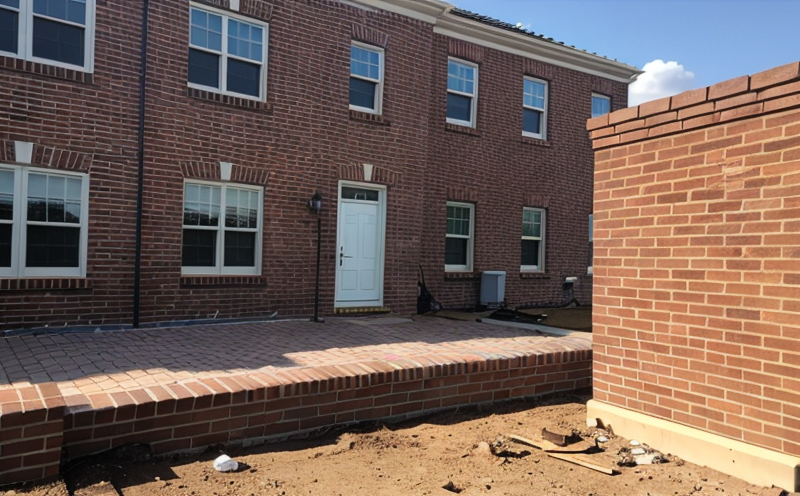EN 772 Surface Hardness Assessment of Bricks
The EN 772 standard provides a comprehensive framework for the testing and assessment of the mechanical properties of building materials, including bricks. One of its key components is the surface hardness evaluation of bricks, which ensures that structural integrity is maintained over time. This service focuses on assessing the surface hardness of bricks using the EN 772-1 and EN 772-3 specifications.
The importance of this test cannot be overstated as it directly influences the durability, safety, and longevity of masonry structures. Surface hardness is a critical factor that determines how well bricks can withstand environmental stressors such as freeze-thaw cycles, abrasion, and chemical attacks. By ensuring high surface hardness, we help prevent premature deterioration, reduce maintenance costs, and enhance overall structural performance.
The test procedure involves measuring the resistance of brick surfaces to indentation using a standard indenter under controlled conditions. The primary outcome is expressed in megapascals (MPa), which provides a quantitative measure of the material's hardness. This data is crucial for quality assurance during production, ensuring that bricks meet specified performance criteria.
Our expertise lies in accurately interpreting these results and providing actionable insights to clients. Whether you are involved in new construction or retrofitting existing buildings, this information is invaluable for selecting appropriate materials that will stand the test of time.
The following table outlines the key steps involved in preparing samples for surface hardness testing:
| Step | Description |
|---|---|
| 1. Selection of Bricks | Select a representative sample of bricks from the batch being tested. |
| 2. Conditioning | Allow selected bricks to acclimatize to laboratory conditions for 48 hours. |
| 3. Surface Preparation | Clean and dry the brick surface using appropriate methods. |
| 4. Indentation | Perform indentation tests on multiple locations across each brick. |
The second table provides an overview of typical acceptance criteria:
| Criteria | Description |
|---|---|
| Average Surface Hardness (MPa) | Must meet minimum specified value for the grade of brick being tested. |
| Variability in Hardness | Acceptable range to ensure consistency across samples. |
In summary, EN 772 surface hardness testing is a vital tool in quality assurance and compliance. It ensures that bricks used in construction projects meet the necessary durability standards, contributing significantly to long-term structural integrity and safety.
Scope and Methodology
The scope of this service encompasses all aspects related to the surface hardness assessment of bricks according to EN 772-1 and EN 772-3. These standards provide detailed protocols for conducting indentation tests on brick samples.
- Sample Selection: Ensuring that only representative samples are chosen from the batch of bricks under test.
- Conditioning: Allowing samples to acclimatize to laboratory conditions before testing begins.
- Indenter Type: Using a tungsten carbide indenter with a diameter of 1 mm or other specified diameters depending on the standard being followed.
The methodology involves several critical stages:
- Sample Preparation: Cleaning and drying the brick surfaces to remove any contaminants that could affect test results.
- Indentation Testing: Applying uniform pressure onto the prepared brick surface using an indentation machine. Multiple readings are taken from various locations on each brick.
- Data Collection: Recording all relevant data points including load applied, depth of indentation, and final hardness value.
- Analysis: Calculating average values across multiple tests to determine compliance with specified limits.
This approach ensures consistent and accurate measurement of surface hardness, providing reliable data that supports informed decision-making processes within the industry.
Competitive Advantage and Market Impact
- Informed Decision-Making: Provides clients with objective evidence regarding the quality of bricks they are considering for use in their projects. This leads to better choices that align with project specifications and budget constraints.
- Better Compliance: Ensures adherence to international standards like EN 772, which enhances reputation among stakeholders and improves market competitiveness.
- Enhanced Durability: By selecting bricks with higher surface hardness values, clients can expect longer-lasting structures that require fewer repairs or replacements over their lifetimes.
The impact on the market is substantial. It promotes transparency in the brick manufacturing sector by standardizing testing procedures and encouraging manufacturers to produce high-quality products. This ultimately benefits end-users who benefit from more robust, reliable construction materials.
Use Cases and Application Examples
- New Construction Projects: Ensuring that the selected bricks have sufficient surface hardness to endure harsh environmental conditions during the building's lifespan.
- Retrofitting Existing Buildings: Identifying areas where brickwork may be weakening due to age or exposure, allowing for targeted interventions to restore structural integrity.
- Quality Assurance in Production: Monitoring production processes to maintain consistent quality levels that meet both internal and external requirements.
The following table illustrates some real-world use cases:
| Use Case | Description |
|---|---|
| New Construction Projects | Ensuring that bricks used in the foundation and exterior walls have adequate surface hardness to resist weathering. |
| Retrofitting Existing Buildings | Inspecting brickwork around windows, doors, and chimneys for signs of erosion or damage that could compromise structural stability. |
| Quality Assurance in Production | Regularly testing incoming raw materials to verify their compliance with specified hardness requirements before incorporation into the manufacturing process. |
These applications highlight the versatility and importance of surface hardness assessment in various stages of construction and maintenance activities. Understanding these use cases helps stakeholders appreciate the significance of this service in maintaining high standards across the building sector.





